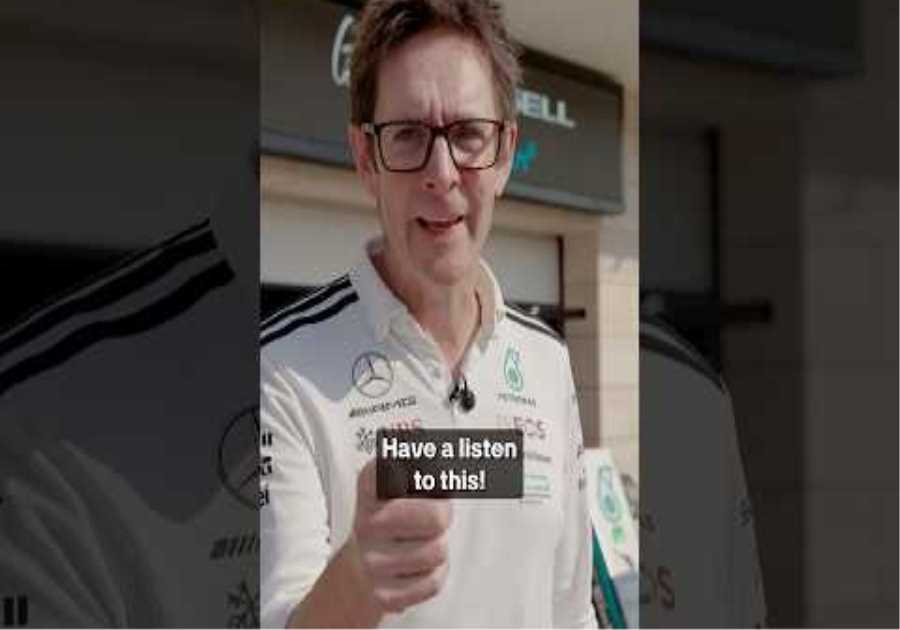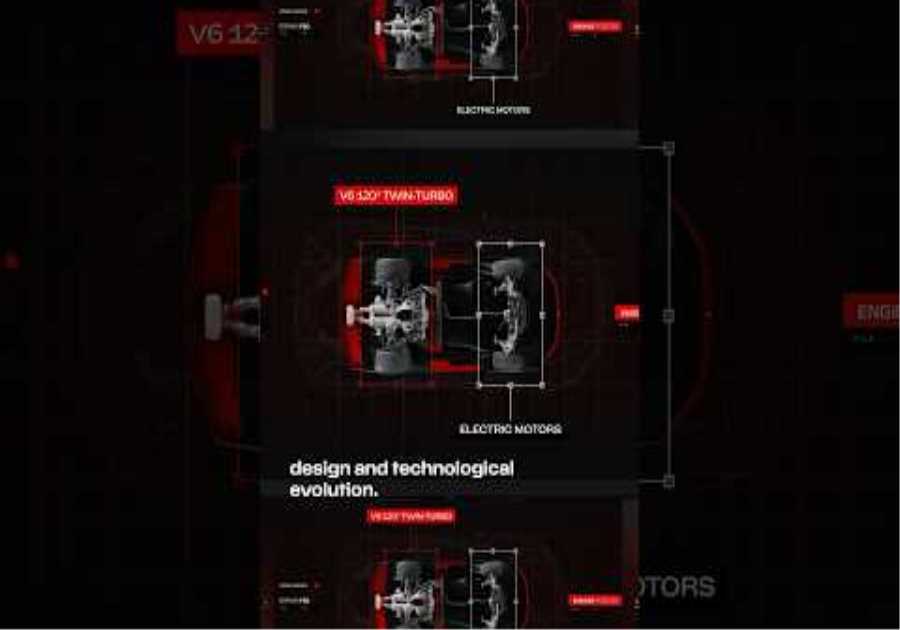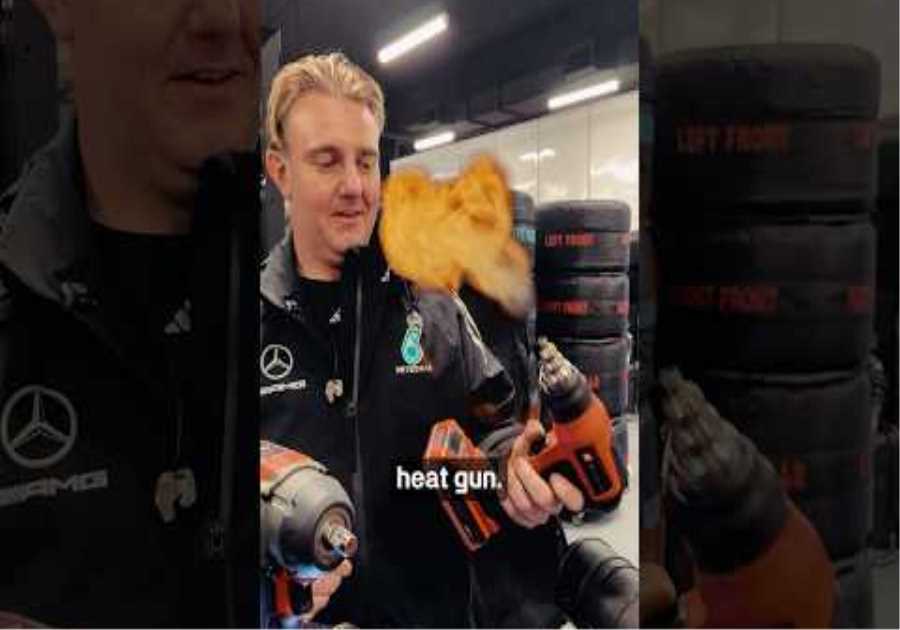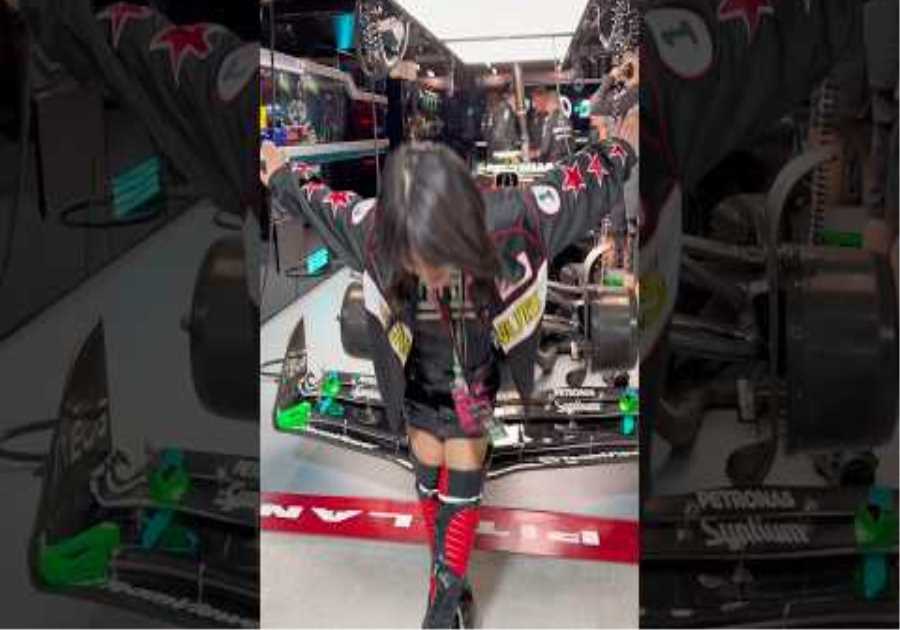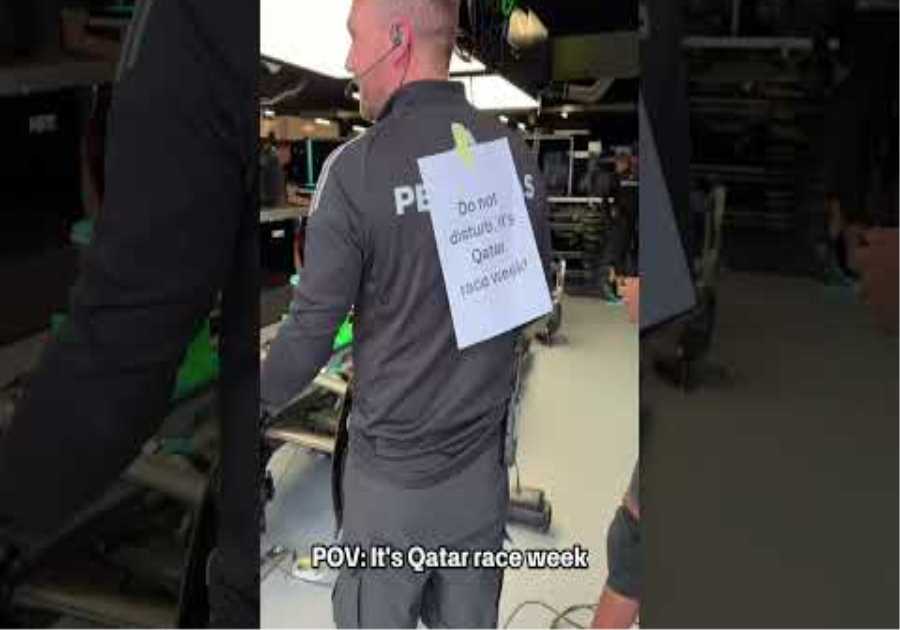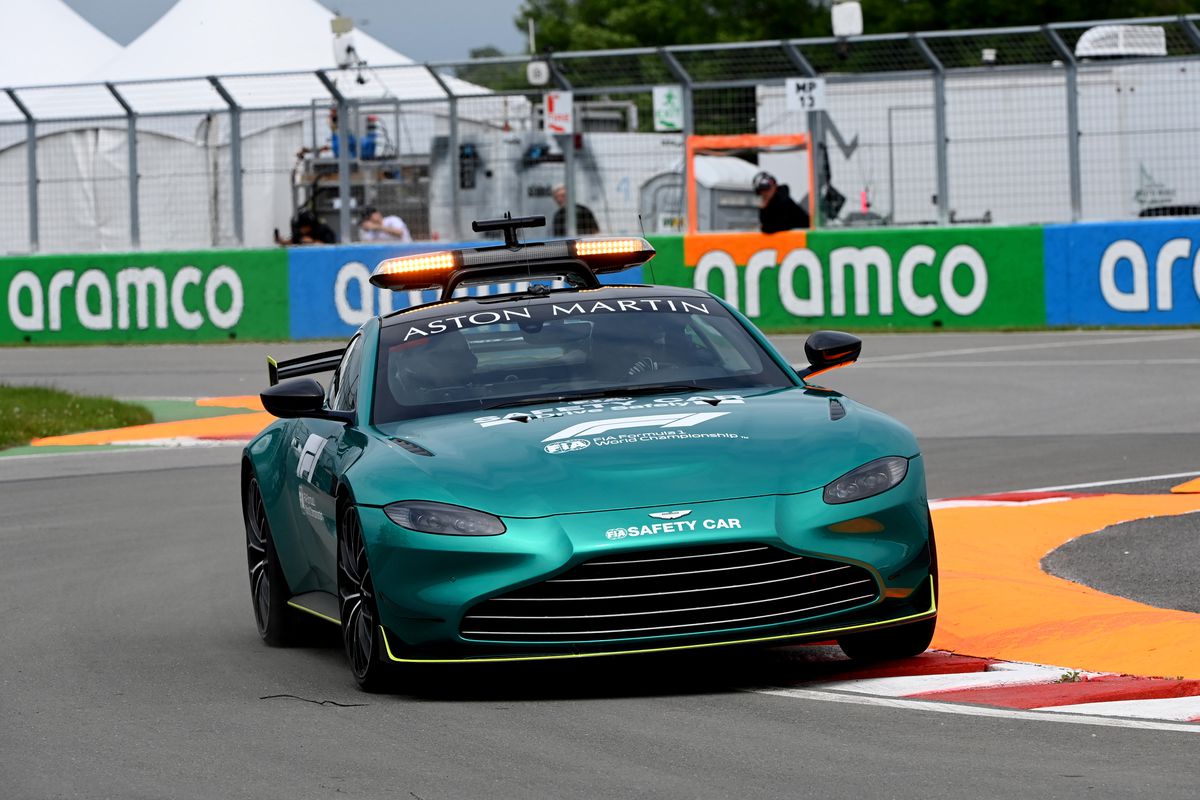
The Aston Martin Vantage safety car makes its way around the Circuit Gilles Villeneuve at the 2022 Canadian Grand Prix in Montreal.Mark Sutton/Handout
The champagne starts flowing in Aston Martin’s paddock club before the Canadian Formula 1 Grand Prix has finished because simply being here is victory enough. In most cases, being here means you have, for reasons that will become clear later, been gifted a complimentary ticket worth around $8,000 to one of the greatest sporting spectacles on Earth.
From Friday practice, through Saturday qualifying and the race on Sunday, F1′s paddock club – situated directly above the pit lane, overlooking the start/finish straight at Montreal’s Circuit Gilles Villeneuve on the Île Notre-Dame – puts every corporate box at every major league sporting event to shame.
Imagine a bougie pop-up restaurant that travels the world, catering 22 races in 20 countries over the nine-month season. Aston and most other teams each have their own paddock clubs for invited guests, although in some cases – as with Red Bull – tickets to a team’s club are also available for purchase by deep-pocketed members of the public. (The teams’ clubs are separate from the general paddock club, tickets for which are sold to the public, but don’t come with as many perks.)
Inside Aston Martin’s airy suite, the bar is open and the waiters bring an endless parade of carefully-plated dishes: truffle-mascarpone cappellacci pasta, dry aged côte de boeuf, grilled lobster, smoked salmon and lamb chops, cappuccinos and mimosas for 150 tons 200 people per race. Guests are also treated to a rare behind-the-scene look at the secretive inner workings of a Formula 1 team, with private tours of pit lane, interviews with the team boss and drivers and visits to the well-organized chaos of the team’s garage. More than 300,000 people turned up to watch the first Canadian Grand Prix in three years – tickets reportedly sold out within days – but these are undoubtedly the best seats at the track.
For Aston Martin, the idea is simple: win on Sunday, sell on Monday.
“Well, we’ll show up on Sunday and sell on Monday,” said Umberto Bonfa, the regional manager for Aston Martin in Canada.
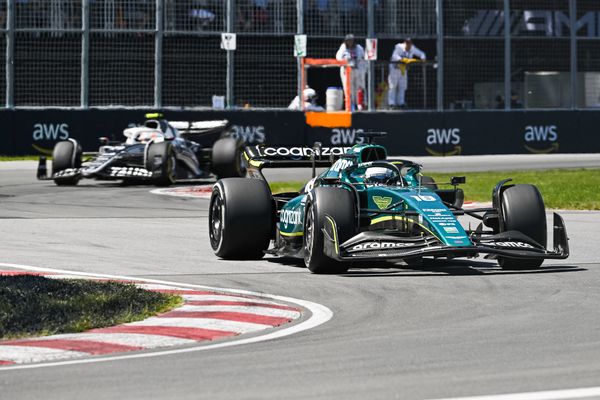
Aston Martin driver Lance Stroll of Canada races during the Canadian Grand Prix on June 19, 2022.David Kirouac/USA TODAY Sports via Reuters
The company delivered nearly 6,200 vehicles in 2021, which was a strong year but not a record-breaking one as enjoyed by the likes of Bentley, Porsche, Lamborghini and Rolls-Royce. There’s a long way to go if Aston is to become something like the British Ferrari.
A win on Sunday was out of the question after a poor performance in qualifying, which determines the starting positions for the race. Montreal’s own Lance Stroll, whose father owns the team and is executive chairman of Aston Martin’s road-car business, qualified in 18th position out of 20 cars, while his teammate – four-time world champion Sebastian Vettel – was 17th. (Vettel also made the news for arriving at the race wearing a T-shirt criticizing Canada’s tar sands.)
Merely being part of the F1 spectacle is nevertheless enough to polish a car company’s image and, ultimately, sell cars, which is why brands like Aston and Alfa Romeo have spent untold millions recently to join the sport, and why Audi and Porsche are rumoured to be joining soon. When the Aston Martin Vantage safety car is out on track – which happens, for example, if there’s a crash during the race – the brand notices a 40 per cent increase in website traffic, according to a company spokesperson. The sport’s organizers reported a worldwide television viewership of 70 million for each race last season. Netflix’s popular Drive to Survive reality-doc series on F1 has led to record levels of viewership in recent years.
The teams’ paddock clubs are for a more targeted (read: rich) audience. It gives Aston, other car companies and their sponsors a chance to impress deep-pocketed clients, both potential and current.
“When you’re in paddock club, you’re dealing with the crème de la crème of clientele,” said Bonfa. This year, for example, the company gifted tickets to two Canadian customers who each purchased a US$3-million Aston Martin Valkyrie supercar.
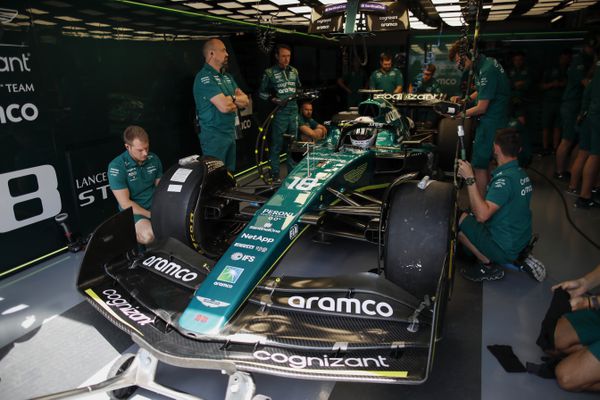
Technicians work on Stroll’s car in the garage at the Canadian Grand Prix. As part of the experience, paddock club guests are invited to sit in a booth at the back of the team’s garage.Zak Mauger/Handout
People don’t need cars like Aston Martins or Ferraris, Bonfa said. People have to want them, and for some the wanting has nothing to do with how a car drives or what engine it has. “It’s individuality, and ‘I’ve got one and my friend doesn’t.’ ”
In other words, for some owners, exotic cars are about getting behind the velvet rope, having what others can’t, which is another reason being invited to a team’s paddock club is such an effective marketing tool.
“If there’s a better commercial for Aston Martin [than the F1 paddock club] you’ve got to find it for me because I don’t know what it is,” said Bonfa.
As part of the experience, paddock club guests are invited to sit in a booth at the back of the team’s garage and watch as a corridor of mechanics, race strategists, engineers as well as the drivers themselves fuss over every detail of the multimillion-dollar purpose-built racecars. When the cars’ engine fires up it sounds like a cement mixer full of metal spinning at 10,000 revolutions per minute. Through a headset, guests can listen in on the banter between the race engineers and the drivers during qualifying. To get any closer to the action you’d have to be dating an F1 driver.
Rain poured throughout qualifying, and spectators in the grandstands got soaked, while those in the paddock club stayed dry and knocked back more wine.
At one point, a colleague spotted former prime minister Jean Chrétien walking into Aston’s paddock club then quickly leaving, like he was in the wrong place. Toronto Raptors star Pascal Siakam was seen at the Red Bull club down the hall. Plenty of Montreal Canadiens players were also in attendance.
Bonfa seemed to know almost everyone. Most of them were former clients – “not just clients, friends,” he corrected me once – that Bonfa knew from his 16 years running the Ferrari dealership in Quebec. The dealership was owned by Lawrence Stroll, Lance’s father. After the elder Stroll took the executive chairman position at Aston Martin Lagonda, he sold the Ferrari dealership and asked Bonfa to join him at Aston.
Bonfa, a charismatic Montrealer, couldn’t say how many cars he may have helped to sell over grand prix weekend. “We’ll see next week when I call them,” he laughed, but added that there’s no rush. The emotions and experience of being in a Formula 1 team’s paddock club stay with people, he explained. He’s had guests who, four years after being in the club at a race, suddenly called out of the blue to say they were ready to buy a car from him.
Lance Stroll raced well, finishing 10th on Sunday, with his teammate Vettel two places behind. After a weekend of being wined and dined by the Aston Martin F1 team, nobody in the paddock club seemed at all bothered about the race results.
Shopping for a new car? Check out the Globe Drive Build and Price Tool to see the latest discounts, rebates and rates on new cars, trucks and SUVs. Click here to get your price.

